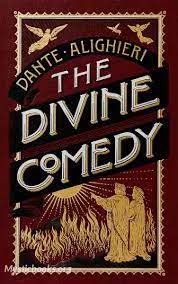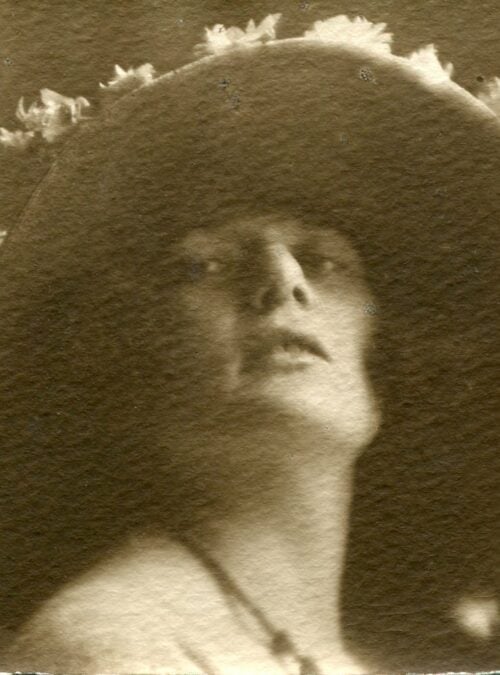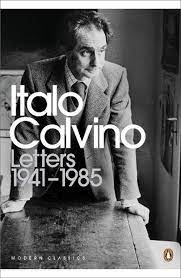The Divine Comedy in other languages – Part One
Author: Mirko Tavoni, University of Pisa

The Museo Casa di Dante in Florence houses and exhibits a collection of translations of the Divine Comedy, the result of the “Dante Poliglotta” project, which includes 284 editions in 49 languages and 22 dialects. The reader can therefore find, in one single place, many of the translations discussed here, as well as essential information on each, on the “Dante Poliglotta” website (https://www.dantepoliglotta.it/lingue-e-dialetti/ – The “Dante Poliglotta” project originates from the personal amateur initiative of an Italian judge, Giuliano Turone, who held pivotal roles in investigations into the Mafia and the Propaganda 2 Masonic lodge, and with the International Criminal Court of the Hague). Further online resources are offered by the Wikipedia page “English Translations of the Divine Comedy” (https://en.wikipedia.org/wiki/English_translations_of_the_Divine_Comedy). In addition, there is the more specialised International Dante Bibliography, produced jointly by the Società Dantesca Italiana and the Dante Society of America (http://dantesca.ntc.it/dnt-fo-catalog/pages/material-search.jsf): here, by entering the keyword “translation”, we find 152 titles of secondary bibliography. The Enciclopedia dantesca, 6 volumes, published by the Istituto della Enciclopedia italiana, Rome 1970-1978, 19842 (also available online), includes entries devoted to languages, countries, and principal translators; Enzo Esposito’s Bibliografia analitica degli scritti su Dante 1950-1970, vol. III, Florence, Olschki, 1990, ch. XIII “Studi su traduzioni e traduttori“, n. 7011-7244, pp. 1039-1065; and the monographic issue of the journal Critica del testo, XIV/3 (2011) dedicated to “Dante, oggi / 3. Nel mondo“, containing thirteen scholarly contributions on twentieth-century translations in as many linguistic-cultural areas of the world.
This very brief website-bibliography premise is necessary, in the very exceptional case of the Divine Comedy, both to point the reader to some immediately available online resources, and to assert the basis on which this fact sheet was constructed, in its atypical form due to the exceptional magnitude of primary and secondary bibliography, distilled below. The numbers of languages and editions listed here at the beginning give, by default, the order of magnitude. According to the secondary bibliography cited above – albeit summary – the translators who translated the entire work or at least one of its canticles – either in full or in part – (almost always, as one would expect, the Inferno), counting each singularly even when they produced more than one edition, turn out to number 415. This number must be understood as an approximation due to the inevitable limits of the lack of precision that is intrinsic to this census work. And the languages (counting, of course, Sardinian and Friulian as separate languages) are 52, to which we must add 20 Italian dialects, a work of translation requiring a much greater effort than one would expect. Such computation of data distributed across centuries can be enlightening precisely because of its statistical evidence. Let us begin with the following table, where languages are classified by their genetic-geographical-cultural proximity to Italian: Latin, Romance languages, Germanic, Celtic, Slavic languages, other non-Indo-European European languages, languages of the Near, Middle and Far East, and artificial languages.
| Language | 15th
Century |
16th
Cent. |
17th
Cent. |
18th
Cent |
19th
Cent. |
20th
Cent. |
21st
Cent. |
TOTAL |
| Latin | 2 | 1 | 2 | 1 | 6 | |||
| French | 1 | 3 | 16 | 21 | 3 | 44 | ||
| Occitan | 1 | 0 | ||||||
| Spanish | 1 | 1 | 3 | 8 | 2 | 14 | ||
| Catalan | 1 | 3 | 1 | 4 | ||||
| Portuguese | 4 | 8 | 12 | |||||
| Galician | 1 | 1 | ||||||
| Romanian | 3 | 3 | 6 | |||||
| Sardinian | 1 | 1 | 2 | |||||
| Friulian | 3 | 3 | ||||||
| Italians dialects | 10 | 19 | 9 | 38 | ||||
| German | 1 | 19 | 29 | 4 | 53 | |||
| English | 2 | 50 | 57 | 15 | 124 | |||
| Dutch | 1 | 4 | 5 | |||||
| Danish | 1 | 1 | 2 | |||||
| Swedish | 1 | 3 | 4 | |||||
| Norwegian | 2 | 2 | ||||||
| Icelandic | 1 | 1 | ||||||
| Gaelic | 1 | 1 | ||||||
| Greek | 2 | 2 | 4 | |||||
| Slovenian | 4 | 4 | ||||||
| Croatian | 3 | 3 | ||||||
| Czech | 1 | 2 | 3 | |||||
| Slovak | 2 | 2 | ||||||
| Polish | 3 | 4 | 2 | 9 | ||||
| Serbian | 1 | 1 | ||||||
| Macedonian | 1 | 1 | ||||||
| Bulgarian | 3 | 3 | ||||||
| Russian | 1 | 5 | 1 | 6 | ||||
| Ukrainian | 3 | 1 | 4 | |||||
| Lithuanian | 2 | 2 | ||||||
| Latvian | 2 | 2 | ||||||
| Albanian | 1 | 1 | ||||||
| Hungarian | 1 | 1 | 1 | 3 | ||||
| Finnish | 1 | 1 | ||||||
| Estonian | 1 | 1 | ||||||
| Basque | 1 | 1 | ||||||
| Armenian | 3 | 3 | ||||||
| Persian | 1 | 1 | 2 | |||||
| Georgian | 1 | 1 | ||||||
| Turkish | 2 | 2 | ||||||
| Kazakh | 1 | 1 | ||||||
| Hebrew | 1 | 1 | 1 | 3 | ||||
| Yiddish | 1 | 1 | ||||||
| Arabic | 3 | 1 | 4 | |||||
| Maltese | 3 | 3 | ||||||
| Bengali | 1 | 1 | ||||||
| Malayalam | 1 | 1 | ||||||
| Chinese | 3 | 4 | 7 | |||||
| Japanese | 4 | 4 | ||||||
| Korean | 4 | 1 | 5 | |||||
| Vietnamese | 1 | 1 | ||||||
| Esperanto | 2 | 1 | 3 | |||||
| TOTAL | 4 | 1 | 0 | 7 | 119 | 228 | 56 | 415 |
The first full translation of the Commedia was into Latin prose by Franciscan monk Giovanni Bertoldi da Serravalle in 1416 at the request of non-Italian cardinals attending the Council of Constance and interested in the poem as a work of high moral and religious. This was followed, between 1427 and 1431, by the translation into hexameters by the Olivetan monk Matteo Ronto, also motivated by the intention – perhaps because Ronto was an “overseas Venetian” born in Crete – to spread the poem throughout the Christian ecumene.
The fact that the very first translations of the Commedia were in Latin presuppose the militant pre-humanist reflection opened by the Bolognese grammarian Giovanni del Virgilio who, in 1321, criticizes Dante for “throwing pearls at boars” by writing his poem in vernacular, and the discussion taken place in Florence in 1405-1406 between humanists Coluccio Salutati and Leonardo Bruni as to whether the vernacular tongue enhanced or diminished the value Dante’s work. But the specific motivation of these two translations, made by two members of the clergy – as well as of the numerous fourteenth-century Latin commentaries on the poem, including Graziolo dei Bambaglioli (1324), Guido da Pisa (1327-28), Pietro Aligheri (1344-55), and Benvenuto da Imola (1375-1380), which include numerous Latin paraphrases and real translations of the text – is not to assert the superiority of Latin over the vernacular, but to spread Dante’s Christian message universally.
In the same years, the first two translations into a modern language appeared, both Iberian: one into Castilian, finished in 1428 by the writer and lover of astrology and mythology Enrique de Villena at the request of the Marquis of Santillana – which remained unpublished and which, in the only manuscript available to us, was written verse by verse next to the original text, to facilitate its reading-, and the Catalan translation by the poet Andreu Febrer, tied to the Aragonese court, completed in Barcelona in 1429, in tercets of hendecasyllables, and therefore with autonomous poetic ambitions. These very first translations immediately highlight the dual interest – content-driven, moral and religious on the one hand, and formal-poetic on the other – generated by the Commedia outside Italy, and particularly in Iberian cultures – an interest that seems to be linked to the influence exerted by the Italian humanist movement.
One of the two sixteenth-century translations, of the Inferno alone, still comes to us from Spain, by the Burgos clergyman and humanist Pedro Fernández de Villegas, in rhymed hendecasyllables written in “coplas de arte mayor“, a Spanish verse form consisting of 8-syllable lines (1515). The other is the first translation into French, by the erudite prelate Balthasar Grangier, canon of Notre Dame: a complete translation in stanzas of six alexandrines, dated 1596. It is relevant to note that the first French translation of Petrarch’s Canzoniere dates fifty years earlier (1548) and that French Petrarchism was already flourishing by mid-century. Over the course of the sixteenth century, the question of the Italian language, following the propositions offered by Pietro Bembo (1525), reached a classicist and Petrarchan solution. Dante is therefore not counted among the fundamental references of the literary linguistic norm. In turn, Grangier’s translation remained isolated for almost two centuries, and not only in the French domain.
Classicism, the Baroque and the Enlightenment were terrains with a similar resistance to Dante’s poem, over the course of the seventeenth and eighteenth centuries throughout Europe. Indeed, the first translation of the eighteenth century was the Virgilian-hexameter version by the Jesuit Carlo d’Aquino (1728), in continuity with the Latin translations of three centuries earlier, and specifically in line with the programme of the Ratio Studiorum of the Jesuits, which imposed Latin as the language of learning of the Catholic ruling classes across the world. Another ecclesiastic, the Vicentine abbot Gaetano Dalla Piazza, wrote a version in Latin hexameters (1800), whereas the two later Latin versions were written by secular translators: Giuseppe Pasquale Marinelli’s version in hexameters (1874) and Antonio Bonelli’s version in prose (1932).
A new impetus towards the translation of the Commedia into Romance and Germanic languages began in the last quarter of the eighteenth century, thanks to the complete German prose translation by Lebrecht Bachenschwanz (1767-1769); the three French prose translations, of the Inferno alone by Julien-Jacques Moutonnet-Clairfons (1776) and Antoine de Rivarol (1783), completed by Paul Édouard Colbert d’Estouteville (1796); the English translation, also of the Inferno only and in blank verse (free hendecasyllables) by Charles Rogers (1782); the complete translation by Henry Boyd (1785-1802), in stanzas of six rhymed lines; the various translations of the Count Ugolino’s episode only (which will remain forever, along with that of Francesca, the favourite episode): German (by Karl Friedrich Reinhardt, 1784); Dutch (by Hieronymus van Alphen, 1780); English (by Richard Alsop, 1788, made in the USA), and various passages in terza rima (iambic tercets) by August Wilhelm Schlegel (1794), which are particularly significant as they usher in Dante’s season of romantic exaltation. A mere glance at our table suffices to show the absolute predominance of English in all translations of the Commedia from the early nineteenth century to the present day – almost a third of which, from the mid-nineteenth century onwards, have been made in the United States. The passion for Dante’s work on both sides of the Atlantic is still in full force, both in terms of studies and translations. Particularly emblematic is the fact that the Dante Society of America was the second “Dantean” society ever founded, in 1881 (the first being the Deutsche Dante-Gesellschaft, in 1865, and German is indeed second only to English in the number of translations of the Commedia), while the Società Dantesca Italiana was only founded in 1888. Italian exiles – most notably, Ugo Foscolo and Antonio Panizzi, the great organiser of the British Museum’s library – helped launch Dante in London during the first three decades of the nineteenth century, linking the figure of Dante to the Risorgimento movement towards Italian freedom and unity. The scholar and clergyman Henry Francis Cary, who was also a librarian at the British Museum, achieved and published, between 1805 and 1814, a complete translation of the poem in blank verse which, highly praised by Foscolo and Coleridge, became immediately popular and remained the best-known and most appreciated translation throughout the century in England and beyond: the 1884 New York edition, with illustrations by Gustave Doré, is still the centrepiece of the 1935 Hollywood film Dante’s Inferno, starring Spencer Tracy.
Such a vast production of prose and verse translations was analysed by periods: neoclassical, Romantic, Victorian (which insists on the importance of literal meaning and therefore favours the prose version), and twentieth century (which explores the implications of different metrical solutions, also addressing contemporary poetic language). For the nineteenth century, we will only mention, along with Cary’s, the first and fundamental American translation by Henry Wadsworth Longfellow (1867), poet, scholar and professor of modern literature at Harvard University. Driven by an ethical and cultural admiration for Dante’s work, envisioned as the expression of the spiritual history of a people and an era, it was produced over long years of discussions with the members of The Dante Club founded in Boston in 1862 by Longfellow himself, the embryo of the Dante Society of America.
Of the twentieth-century English translations, two are committed to reproducing the terza rima rhyming verse: the translation by poet Laurence Binyon (1933-43), appreciated by Ezra Pound, and that of crime writer Dorothy Leigh Sayers (1949-62), completed by Dante scholar Barbara Reynolds. Two more were produced in the United States, and namely the prose translation by Charles Singleton (1970-1991), the most influential American “Dantologist” of the century, and the blank verse translation by the poet and critic Allen Mandelbaum (1980-1984), which is available online, along with Longfellow’s translation and a commentary by Teodolinda Barolini, at https://digitaldante.columbia.edu/. The twenty-first century opens with the annotated translation, also in blank verse (2000-2007), by Robert and Jean Hollander (Robert, another important American Dante scholar, is responsible for the Dartmouth Dante Project, https://dante.dartmouth.edu/search.php, which offers commentaries on the Commedia from the fourteenth century to the present day).
John of Saxony (1801-1872) was of decisive importance for Dante studies in Germany. During his long wait prior to taking the throne in 1854, he cultivated his love for the Italian language and for Dante to such an extent that between 1828 and 1839 he produced an excellent full-length translation of the Commedia in free hendecasyllabic form, published under the pseudonym Philalete. Later, as king, he established a cenacle of Dante scholars in Dresden, drawing from a wealth of bibliographical resources and scientific impetus, among which the jurist and philologist Karl Witte stands out. Taking its steps from this first elite group of academics, the Deutsche Dante-Gesellschaft was founded in 1865, year of the sixth centenary of Dante’s birth. Prior to Philalete’s translation, there had been the Romantic translations in terza rima by Karl Ludwig Kannegießer (1809-1821) and Adolf Friedrich Karl Streckfuss (1824-1827), and in free verse (1865) by the aforementioned Karl Witte, author of critical editions of the Commedia itself, La Vita Nuova, De Monarchia, and the Epistolae, and a fervent supporter of the struggles of the Italian Risorgimento. The twentieth century saw, among others, the translations in terza rima by symbolist poet Stefan George (1909-1925) and the Parnassian and esoteric poet Rudolf Borchardt (1923-1930), and the free hendecasyllabic translations by Karl Vossler (1942) – whose ideas were influenced by Benedetto Croce – and Romantic philologists Herman Gmelin (1949-1951) and Walther von Wartburg (the latter in collaboration with his wife Ida, 1963).
French translations are somewhat less numerous. A complete, prose translation is that by the diplomat Alexis-François Artaud de Montor (1811-1813), characterised by an emphasis on romantic, mournful and melodramatic tones, and those of the naturalised Italian citizen Pier Angelo Fiorentino (1840), by the poet Auguste Brizeux (1840), and by the liberal Catholic theologian Félicité Robert de Lamennais (published posthumously in 1855). Numerous translations of the first cantica alone, in the wake of the mentioned translations by Moutonnet-Clairfons (1776) and especially Rivarol (1783), validate Dante’s 19th century image as poet of the Inferno. Among these, we should mention the translation by the lexicographer Émile Littré (1879): written in terza rima and archaizing French, it inaugurates a style that André Pézard would fully develop ninety years later.










